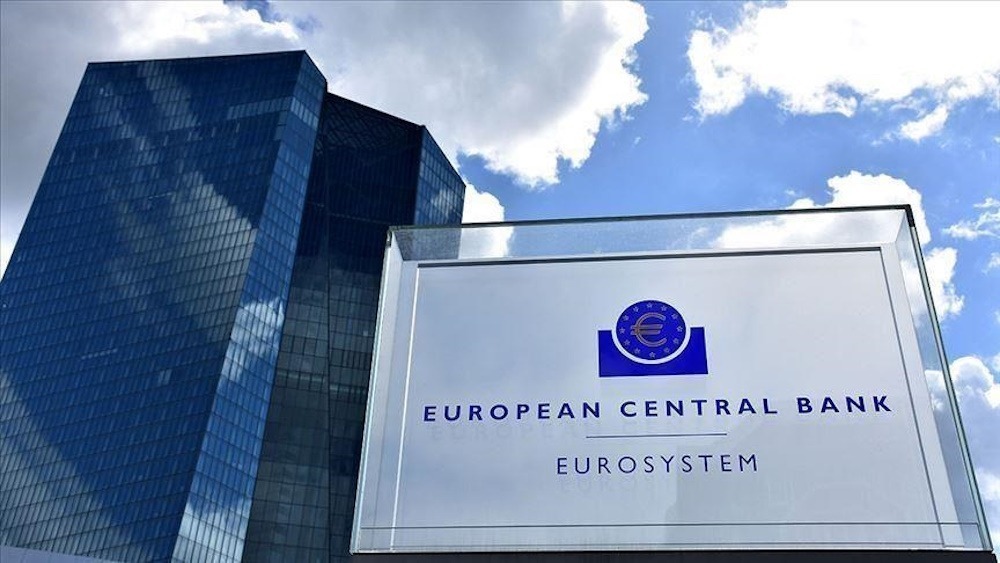ECB has surged ahead of the Federal Reserve

In a significant move, the European Central Bank took the lead among developed-country monetary authorities by initiating interest rate cuts in this cycle. President Christine Lagarde believes she is taking measures to address the potential recession in the eurozone, but this decision gives rise to additional challenges.
The ECB has reduced its main policy rate by 0.25 percentage points, bringing it down to 3.75%. It is noteworthy that the central bank has chosen to lower the policy rate, a move that has not been seen before in its more than 20-year existence, without any accompanying crisis. Instead of engaging in reactive measures, Ms. Lagarde is now making projections, using the ECB’s internal economic models, that indicate a further slowdown in inflation.
The argument for initiating rate cuts at this point is that there is a concern that if disinflation occurs, monetary policy may inadvertently become more restrictive due to the rise in real interest rates caused by slowing inflation. ECB officials express concern about the possibility of inflation falling below target if they do not take action now. This suggests they are worried that their policies could have a negative impact on growth.
Is this truly the current state of affairs in the eurozone? It is not clear whether inflation is steadily returning to the ECB’s target of 2%. The consumer-price inflation rate in May increased to 2.6% year-on-year, surpassing the rates of 2.4% seen in the previous two months. In Germany, a key player, the inflation rate stood at 2.8%. Core inflation, which excludes food and energy, stood at 2.9% year-on-year in the eurozone in May, while Germany experienced a slightly higher rate of 3.5%.
The models that provide reassurance to the ECB are based on assumptions about the causes of inflation, particularly the role of expectations, which have proven to be unreliable in recent years. Ms. Lagarde is taking a calculated risk that Federal Reserve Chairman Jerome Powell is hesitant to embrace. He has stated that he will refrain from reducing U.S. rates until there is tangible proof that the Federal Reserve is successfully meeting its inflation goal.
Meanwhile, recent data indicate that the economic growth in the eurozone is maintaining a solid performance, potentially due to the impact of higher real interest rates. The Eurozone’s GDP experienced a growth of 0.3% in the first quarter of this year, marking a positive shift after two consecutive quarters of contraction. Europe is grappling with a challenge in economic growth, but it’s not something that the ECB has the power to resolve. Instead, let’s reconsider the green-energy policies that are impacting German manufacturers, the Italian bankruptcy laws that offer protection to low-productivity firms, and the French tax rates that may hinder entrepreneurship.
The exchange rate is a major concern for the ECB. The fluctuation in exchange rates is influenced by the differences in monetary policies between the Federal Reserve and other central banks. The actions taken by Ms. Lagarde are increasing the chances of the euro losing value. The euro began to decline against the dollar as ECB officials indicated in recent weeks that a rate cut on Thursday was highly likely. In the two days leading up to the meeting, the euro lost 0.31% of its value against the greenback.
Following Ms. Lagarde’s announcement, the euro experienced a notable increase, possibly due to investors’ optimism regarding the sustained growth in the eurozone and their anticipation of a future rate cut by the Fed. If European growth continues to disappoint, there may be further depreciation. Additionally, if it becomes evident that Mr. Powell is not changing his stance, this could also contribute to the depreciation.
The consequences of exchange-rate volatility are significant. These factors encompass disturbances to investment flows, increased import-price inflation particularly for energy, and the potential for a new trade war if a second Trump Administration decides to impose tariffs. While a single rate cut may not be seen as a drastic change, it’s important to remember that easier monetary policy does come with its own consequences.

